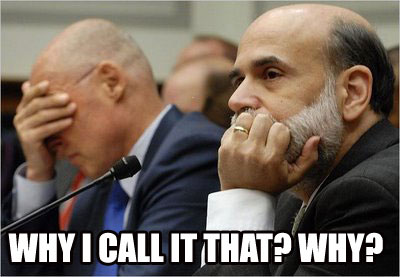Kaneko Masaru and Andrew DeWit
What Japan can teach Americans and the world about financial crises is a question that has been cropping up for some time. References to Japan in fact appear to be increasing, with a recent turn to worries of “becoming Japanese” through a decade or so lost to malaise and marginal growth, perhaps interspersed with bouts of financial panic. Heralding this Japanization is America’s seeming onset of deflation and a liquidity trap in tandem with a virtually zero interest rate policy. These developments have largely eroded American policy options on the financial side. In Japan, this impotent, “pushing on a string” stage of the post-bubble shakeout left the state sector largely moribund, especially after it vainly tried to spend its way out of the crisis. It remains to be seen whether the US, under Obama, will pursue an effective fiscal policy or repeat this year’s tax rebates, the equivalent of simply throwing money in a hole. This commentary reviews the highlights of our current crisis as well as what we can learn from Japan and whether we are, in fact, learning from Japan.
Mid-September of 2008 abruptly blackened every rosy scenario concerning the American subprime crisis and its spillovers. Through the summer, optimists had continued to insist that an American recession was unlikely and that, even if there were to be one, it would almost certainly be short and shallow. They averted their eyes from the implications of the September 7 US Government takeover of Fanny Mae and Freddie Mac, with their USD 5 trillion-plus in debt obligations, declaring that markets would be stabilized by the then-biggest yet of interventions. Yet even effectively nationalizing Fanny and Freddie failed to put a damper on the panic welling up in the markets. And then on September 17, the long-simmering and periodically over-boiling pot of financial conundrums suddenly erupted into a full-blown crisis that continues to wreak havoc around the world. In a few short weeks, the blast eviscerated the investment-banking industry, brought extraordinary volatility to virtually all major stock markets, and induced something like “The Day After Tomorrow” glaciation scenario in global credit markets.
The state has been hurriedly ushered back in, as lender of only resort, to fund a steady stream of nationalizations of financial firms, capital injections, and other desperate measures. A spreading movement among the European countries and elsewhere would guarantee all banking deposits. On October 3, in an election year, the U.S. Congress upped the ante of increasingly colossal interventions with the USD 700 billion Emergency Economic Stabilization Act. The Act allows the government, via the Troubled Assets Relief Program (TARP), to purchase mortgage-related securities from financial agencies as well as directly inject capital into them. Then on October 8, nearly all major central banks simultaneously instituted a rate cut. A November 24 Bloomberg report relates that, altogether, the US financial authorities have committed themselves to lend about USD 7.4 trillion in order to rescue banks and other financial entities in peril. This figure includes the over USD 320 billion incurred in late November when the USD 2.2 trillion Citi Group teetered on the cusp of a bailout or (unthinkably) falling into Lehman-land.
Back in an
And in spite of massive interventions,
Meanwhile, a disaster epic has been playing in the credit markets, essential for the transmission of finance into the pockets of the real economy. Put simply, credit markets have frozen up. With the likes of Bear Stearns and Lehman’s Brothers made bankrupt through trading in complex financial instruments, especially mortgage-backed securities, banks do not know which counterparties they can trust. No one knows who is holding how much in toxic assets and what any given bad asset might be worth. Size and reputation no longer imply safety. The Lehman bankruptcy was the largest in
Ships at anchor
One of the most disturbing aspects of this credit crunch is its shock to the truly broad economy of global trade. According to an October 29 Bloomberg report, 90 percent of the USD 13.6 trillion global trade in goods relies on letters of credit exchanged between financial institutions to ensure payment of shipped goods. As trust contracts even within the once-cozy confines of Wall Street and other financial districts, its compression globally and, in particular, its effect on letters of credit is even more pronounced. Letters of credit have financed global trade for centuries, and especially in recent years. But financial intermediaries are now either refusing to honor these letters of credit or are hiking their premiums by multiples of what they were just months ago. Over the long chain of intermediaries involved in global trade, trust in repayment is dissipating like electrical current sent too far. Added to the problem is that plunging commodity prices and rapidly shifting exchange rates threaten to render the shipments themselves unprofitable en route to their destination. Moreover, shipping firms have an enormous debt burden due to a frenzied boom in buying new ships over the past several years in anticipation of continuing robust expansion in global trade. In consequence, the Baltic Dry Index (a measure of rates for shipping dry goods) has plunged by over 90 percent from its May 21, 2008, peak. The container-shipping index is expected to show even more spectacular declines as this shock wave rips through far-flung production chains in our borderless world.
The World Bank, IMF and other agencies are painfully aware of this crisis in global trade, and are working to extend short-term funding to low-income countries. But since global trade is, as we noted, a USD 13 trillion annual business, these agencies simply do not have the means to deal with a problem of this scale. Imagine the scenario early next year if this crisis within a crisis continues: goods are not being shipped, and hence those who export are being hurt; but those who import are being hurt as well, as they do not receive the raw materials and goods to make things with and to consume. The entire global supply chain is at risk, something that the World Trade Organization recognizes but is ill-equipped to address. Already, the East Asian port cities of
The credit freeze drove global finance to the brink of collapse in October, and it could quickly be driven back there and beyond by some blindsiding turn of events. This includes spillovers from the ongoing compression of global trade, the havoc pouring out of the currency markets and the ongoing implosion of the USD 2 trillion hedge fund industry. Or the accelerating downturn in American commercial property markets could undermine asset-backed securities enough to engender a new round of panic stretching across asset classes. The last redoubts of the optimists are the vast, unregulated universes of finely distributed risk seen in the USD 55 trillion credit default swap market, a subset of the nearly USD 670 trillion derivatives market. These derivatives markets are said to be impervious to the chaos swirling around them because they are largely insurance contracts that, overall, generally cancel each other out. Maybe so, but until recently subprime was regarded as too small an asset class to have systemic implications. Everyone should be concerned about the fact that derivatives are not traded in open markets with proper regulation on product design and capital-adequacy margins. Indeed, more than a few credible, specialist voices warn that the collapse of one or more large “reference entities” (i.e., the firm or other item being insured by these contracts) could trigger a catastrophe. The ostensible dispersion of risk through derivatives may have, in fact, produced an enormous systemic risk, akin to the explosive potential of a huge concentration of combustible dust awaiting a spark.
The details of this financial crisis – its enormous scale, the lack of trust among financial institutions, the freezing of the commercial paper markets and other evidence of an accelerating credit crunch – naturally make one think of
One of the main hurdles to effective action in Japan was the confidence that asset values would hit bottom and then recover after a few years, eliminating the need for serious public-sector action. This mistake was to some extent mirrored in the United States (and elsewhere) over the past year. The financial sector and financial authorities simply refused to recognize that toxic assets were taking a protracted, perhaps permanent loss of their bubble-era value. Both effectively colluded in a “wait and see” game, counting on recovery, a game that left the financial system spectacularly vulnerable. While they did not waste as much time as in the Japanese case during the 1990s, the scale of the tsunami that have since ensued dwarf any of the crises that roiled Japan from the late 1990s to early 2000s.
There was also political resistance to action, largely because the authorities were unwilling to investigate and prosecute criminal behavior. Public sector funds, amounting to Yen 685 billion, were first used to rescue seven failed “jusen” housing loan firms in 1996. This bail-out caused a political backlash that further encouraged the authorities to sit on their hands or intervene only sporadically as long as possible. In 1998, Japanese financial authorities injected a further Yen 1.8 trillion into the system, but the Long-Term Bank of Japan and the Nippon Credit Bank went bust (they are now, respectively, the Shinsei Bank and the Aozora Bank). August 24 of the same year saw the Economic Strategy Council formally set up. In 1999, this council announced a three-year suspension of any inquiries into bank management responsibility along with a further Yen 7.5 trillion injection of public funds. But these controversial moves failed to resolve the crisis and a protracted and dangerous deflation ensued.
So perhaps another negative lesson for America from Japan is that injecting even massive public funds is not in itself sufficient. The proper assessment of toxic assets via a close scrutiny of their value is clearly required, as is proposed by the FDIC (and appears about to become law). But perhaps more important even than that, there must be serious inquiry into management wrongdoing. Systemic failures require systemic solutions, lest the symptoms continue to fester and manifest themselves in periodic and perhaps increasingly large crises. In other words, if one is going to use the state, then its pecuniary as well as punitary arms need to be used with a comprehensiveness and intelligence that not only deals with the technical aspects of the crisis but also the natural political resistance to bailing out rich and irresponsible people whose actions contributed to the crisis. The latter clearly have to be made to pay, in the fiscal and legal senses of the term, lest the path to recovery be constricted by political fallout.
But to date, the American bailout and related policies are spectacular for their lack of transparency, accountability and consistency. As a result of various missteps and volte-faces, Treasury Secretary Henry Paulson’s credibility is perhaps as low as that of the current President. At a September 23 Senate Banking Committee hearing, Paulson declared that “we need oversight…we need transparency,” but he appears to have shifted his position considerably. As of late November, Paulson’s Treasury had already spent about USD 300 billion worth of the TARP program. About USD 125 billion of this went to America’s nine largest banks and investment banks, another USD 125 billion has gone to publicly traded regional banks (many almost certain to fail even with this support), and the remainder has been largely allocated to American International Group. According to some recent assessments, much of this money has been used by the banks to pay shareholders, with plenty also going to executive salaries and bonuses. Another chunk of it has gone for buybacks to increase the value of shares. These are all serious, and in some cases potentially illegal, departures from the original purposes of the fund.
Keep in mind that Paulson originally argued that, as the name implies, the “Troubled Assets Relief Program” would be used to purchase mortgage-backed securities. These assets were then be sold through something resembling a reverse auction (buying them from the banks at the lowest prices they would be willing to sell them for). That plan was absurdly unworkable then, and remains so, but in a November 12 about-face Paulson abandoned the original plan and declared the Treasury would focus on capital injections and other measures to end the freeze in consumer credit markets. This abrupt shift shocked Wall Street and came with few concrete details of how the new approach would be implemented.
Paulson has in fact been the most salient example of mismanagement. Last July, he secured authority from Congress to aid Fannie Mae and Freddie Mac by promising that he would not need to use it. Then in early September he did have to use it. His above-noted shift on capital injections was more recently followed by a declaration that he would probably need to use the entire USD 700 billion of the TARP. This declaration came a week after he claimed he would need only about half the funds, and would leave the remainder to the Obama Administration. Paulson’s serial reversals of earlier positions are certainly rooted in the incredible flux of events. But his job is to craft pro-active policy and seek to stabilize markets rather than further roil the latter.
Moreover, Paulson’s mismanagement of the bail-out and the TARP is hard to explain as merely poor foresight. It was clear last year, and certainly from September of this year, that injecting capital directly into the banks was absolutely essential. Paulson staunchly opposed this policy, for reasons that remain obscure. But there is speculation that Paulson, as a product of Wall Street (a former head of Goldman Sachs), simply was unable to admit that matters had come to such a crisis that capital injections were necessary. In other words, ideological and personal ties to Wall Street appear to have prevented Paulson from recognizing the obvious (in back of that, one has to wonder how much lobbying there was on him from Wall Street not to opt for the interventionist strategy). Whatever the case, the policy failures with this program and his allowing funds to be used to pay dividends, bonuses and deferred compensation, as well as in making acquisitions, threaten to discredit the overall effort to fix the financial sector’s crisis through direct public intention of capital into the banks. This interventionism is essential, but it is worrisome that Paulson may have succeeded in politicizing it to the point where a proper clean-up is either difficult to do or is done and then generates a strong backlash. This complacent incompetence, too, is reminiscent of post-bubble Japan’s policy failures.
We all learned from the Japanese experience that it is imperative to act fast, but it is also just as critical to act intelligently and in the collective interest. Wasting precious time allows the crisis to deepen and thus increases the eventual costs of bail-outs and economic losses. Politicized policy likewise risks generating a dangerous level of distrust concerning efforts to recapitalize the banks, providing a strong foothold for reactionary politics in the deepening recession. But thankfully, Paulson is running out of money, as once he hits the USD 350 billion mark, he must go to the US Congress to receive the next USD 350 billion. One can only hope that Paulson’s failures force the Congress to investigate, and very aggressively investigate, wrongdoing in tandem with focusing on the smart targeting of public funds. One thing that is clear from Japan is that allowing the financial industry and its ideologically blinkered representatives to craft what they like is a recipe for costly failure, a failure whose burden compounds over the years in lost opportunities for millions in the real economy.
Andrew DeWit thanks the
Kaneko Masaru is Professor of Public Finance,
Andrew DeWit is Professor of the Political Economy of Public Finance,
They are the coauthors of Global Financial Crisis published by Iwanami in 2008.
Recommended citation: Kaneko Masaru and Andrew DeWit, “Subprime Learning: Positive and Negative Lessons of the Japanese Bubble for Americans,” The Asia-Pacific Journal: Japan Focus, Vol. 48-3-08, November 24, 2008.
See the following articles on related topics:
•John B. Judis, Debt Man Walking: The US, China, Japan and the Foundations for a New Bretton Woods
•John Garnaut, Can Chinese Government Spending Avert Recession? A Report from Wenzhou
•Nouriel Roubini and Brad Setser, The Rising Risk of a Hard Landing in China: The Two Engines of Global Growth – U.S. and China – are Stalling. UPDATED
•R. Taggart Murphy, Asia and the Meltdown of American Finance








